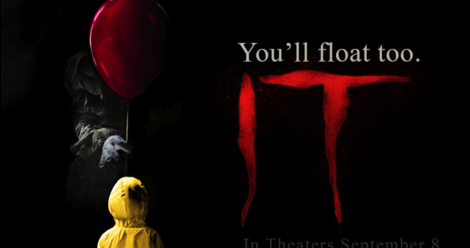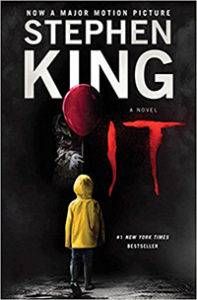
The New IT Film Fails Its Sole Female Character HARD
Warning: spoilers abound for the new It film.

When we first encounter Beverly, she is sitting in a bathroom stall, preparing herself to be the victim of a female bully convinced Beverly has slept with her boyfriend. After being doused in garbage water, Beverly leaves school for the day and runs into Ben, a boy who is also the prospective victim of bullies. What follows is a genuinely wonderful exchange about perseverance in the face of adversity and New Kids on the Block fandom. Beverly leaves Ben all aflutter; because she was nice to him, we now have to witness Ben swoon over her for the next two and half hours.
After this scene, Beverly’s presence in the movie becomes inextricably linked to male desire. After Ben is beaten up by a bully, she helps Ben and his friends—the core group of boys, dubbed affectionately as “the losers”—acquire first aid materials by flirting with a creepy old pharmacist. She then catches up with the losers outside the pharmacy and suggestively remarks to them that Ben needs a different kind of treatment for his wounds. The boys fawn over her, especially Bill, who invites her to hang out with them the next day. It seemed that the central question about Beverly’s presence in the film started to become which of the boys she would eventually hook up with.

Beverly cuts off her hair, a reaction to a past and still very present trauma. Donning her new pixie cut, she joins the group of boys the next day as they are mustering up the courage to jump off a cliff into some water. She arrives on the scene and immediately disrobes. We are treated to a straight on shot of her in her bra and underwear (curiously no one in this scene decided to wear a bathing suit). She then jumps into the water right away, which has the effect of both impressing and emasculating the boys. They splash around some and play chicken. We then cut to a scene of the boys sitting on some rocks, eyes wide and mouths agape. We know what they’re staring at of course: Beverly sunbathing. It felt strange to watch this scene, which was supposed to be played lightly for laughs, after the heavy implication of sexual assault. Moreover, when a gang of bullies corners Beverly and the boys, the lead bully threatens to rape her, which angers Ben to the point that he throws a rock at the bully’s head.
Sometime later, Beverly’s father finds a postcard with a romantic poem from Ben. He confronts her about the poem, about her haircut, and about all the time she has spent hanging out with boys. He then tries to rape her. I wanted to applaud the movie for making sexual assault more terrifying than the supernatural horror, but the movie is so determined to objectify its sole female presence—not to mentioned the constant stream of sexist jokes the boys exchange—that I became more angry than scared. When Beverly escapes his grasp, he chases her throughout the house, into the bathroom, where she eventually kills him with a piece of the porcelain toilet. She breathes a sigh of relief but is then immediately kidnapped by Pennywise the Clown. Congrats for surviving sexual assault; your prize is getting kidnapped by a demented clown.
The new IT film uses Beverly’s kidnapping as the impetus to once and for all defeat Pennywise. At this point in the movie, the boys are all mad at each other, but Bill is able to convince them to fight Pennywise by invoking Beverly’s kidnapping. It could have been a wholesome, friendship-is-magic motivation if the movie hadn’t, again, made it a point to show all the boys wanting her. Pennywise holds Beverly in stasis, suspending her lifelessly in the air. The boys find her and they manage to awaken her by having the lovelorn Ben plant a kiss on her. After defeating Pennywise and escaping from the sewer, the gang goes home, one by one. When it’s just Bill, Ben, and Beverly, the audience in my theater snickered; who would she end up with? Ultimately, it’s Bill, who kisses her before the credits roll.
It could have been worse in the new IT film. In the book, Beverly keeps the boys together by having sex with all of them. Thankfully, that scene was excised from this adaptation, but the spirit of that scene is still present: Beverly is used as a tool, both for plot and for male desire. She has been raped, is constantly threatened with more rape, objectified, ogled, and kidnapped. By stripping away most if not all of her agency, the movie takes a solid, promising female character and turns her into something barely-there, floating, waiting.














